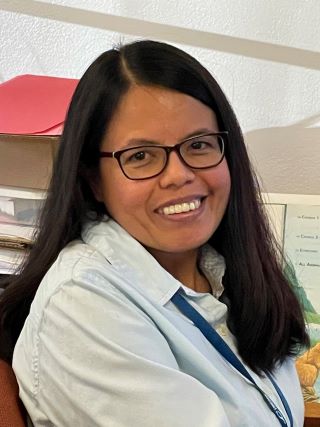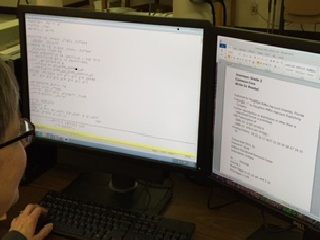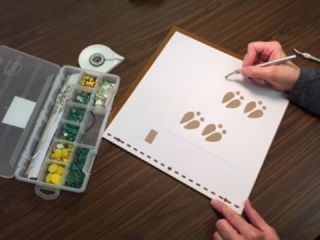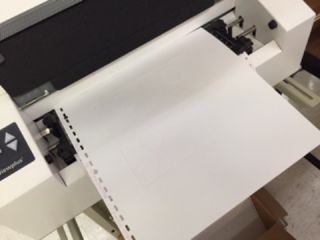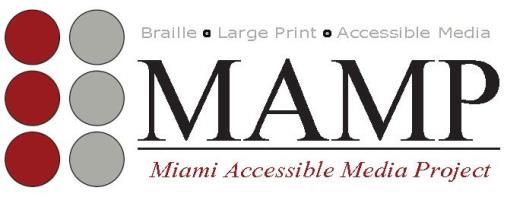Unified English Braille
Timeline for Implementation in Indiana
Compiled by Indiana UEB Implementation Committee
August 21, 2014; Revised April 13, 2015; November 16, 2015
Unified English Braille Code
In November 2012, the Braille Authority of North Ameria (BANA) voted to adopt Unified English Braille (UEB) to replace the current English Braille American Edition (EBAE) in the United States while continuing the use of the Nemeth Code for Mathematics and Science Notation, 1972 Revision, the Music Braille Code 1997, and the International Phonetic Alphabet (IPA) Braille Code, 2008. The full motion is posted on the BANA website.
BANA, at its November 2013 meeting, affirmed January 4, 2016, (Louis Braille’s birthday) as the date by which the United States will implement the general use of Unified English Braille (UEB). This action was based on a year of dialogue and planning that included the UEB Transition Forum, held on October 16, 2013. For more information, view the official press release.
Indiana Statewide UEB Transition
Indiana has been actively working on the transition to UEB. A statewide stakeholders committee met in 2014 and 2015, and will continue to meet ongoing to further develop/refine Indiana’s state plan for UEB implementation and to guide the transition. The UEB Implementation Committee consists of representatives from the Statewide Resource Center, State AT Project, University Training Programs, Adult Services, Residential School and Outreach Staff, TBLV’s from around the state, Prison Braille Program, Braille Transcribers, and the Indiana Department of Education.
The Indiana UEB state plan was submitted to and approved by the Indiana Department of Education in September 2014. To date: transcribers have trained in the UEB and received their Canadian UEB certification. They are currently seeking U.S. national UEB certification; university programs have implemented UEB coursework for their teacher training programs; and workshops, conferences and webinars have and will be conducted for BLV teaching and paraprofessional staff.
Considerations for Math Code
UEB is one code for literary, mathematics, and computer science text elements. The UEB technical code for math and science is part of the UEB and is used in all grade levels; therefore the use of the term UEB implies a complete code that includes math.
As a default, requests for instructional materials for subjects that require math code (i.e., science and mathematics), for all grades, will be produced in UEB with Nemeth Code for mathematics. UEB will be provided in lieu of Nemeth Code only if the student’s IEP dictates UEB for math instruction. The Case Conference Committee (CCC) must determine if UEB or UEB with Nemeth better meets the instructional needs of the student.
When it is determined that braille is a consideration for the student who is blind, then the code for the instruction of math/technical subjects (Nemeth or UEB) will need to be specified and a written justification provided.
View “Nemeth UEB Factors and Considerations for Math Code Indiana” developed by the UEB Implementation Sub-Committee.
Timeline
The transition to UEB from EBAE in Indiana will be a six year plan, based on a school year calendar. It began with the 2013-2014 SY and will run through the 2018-2019 SY. Full implementation of the UEB (i.e. instruction, materials, assessment) is targeted for the 2018-2019 SY.
Each local education agency (LEA), based on the approved state timeline, will be responsible for developing a plan for implementation of the UEB at the local level to meet the full implementation UEB date. The Indiana Educational Resource Center (IERC) will work closely with LEA’s to best meet the educational braille needs of individual students.
Implementation of this timeline involves the collaboration of state and national partners and may change as state and national information changes or becomes available.
Timeline Breakdown
2013-2014 SY
- Transcriber training.
- Research and begin drafting state plan.
2014-2015 SY
- Transcriber training and certification.
- Approval of a state plan for UEB implementation.
- Statewide UEB professional development for BLV teacher and paraprofessional staff (workshops, conferences, braille training, webinars and UEB resources).
January 2015
- IERC begins transcription of braille requests, not previously transcribed in EBAE, in UEB and/or UEB with Nemeth Code, for the 2015-2016 school year, for Grades K-5.
- Existing materials transcribed in EBAE will continue to be provided in EBAE. Exceptions will be made for students just learning the UEB, who have had no previous training in the EBAE.
- Transcription and conversion of instructional materials will be evaluated on the educational needs of each individual student and based on established criteria set by the IERC.
Spring 2015
- IDOE provides state assessments in EBAE/Nemeth.
2015-2016 SY
September 2015
- Teachers begin UEB instruction for students in Grades K-5. Begin using available UEB materials.
January 2016
- IERC begins transcription of braille requests, not previously transcribed in EBAE, in UEB and/or UEB with Nemeth Code, for the 2016-2017 school year, for all grades.
- Existing materials transcribed in EBAE will continue to be provided in EBAE.
- Transcription and conversion of instructional materials will be evaluated on the educational needs of each individual student and based on established criteria set by the IERC.
Spring 2016
- IDOE provides state assessments in UEB and/or UEB with Nemeth as well as EBAE/Nemeth for Grades 3-5 and EBAE/Nemeth for Grades 6 and up.
2016-2017 SY
September 2016
- Teachers begin UEB instruction for students in grades 6 and up. Begin using available UEB materials.
JanuarY 2017
- IERC continues transcription of braille requests, not previously transcribed in EBAE, in UEB and/or UEB with Nemeth for all grades.
- Existing materials transcribed in EBAE will continue to be provided in EBAE.
- Transcription and conversion of instructional materials will be evaluated on the educational needs of each individual student and based on established criteria set by the IERC.
Spring 2017
- IDOE provides state assessments in UEB and/or UEB with Nemeth and EBAE/Nemeth for all grades.
2017-2018 SY
September 2017
- Continue UEB instruction as needed for remaining students, move in and transfer students.
January 2018
- IERC continues transcription of braille requests, not previously transcribed in EBAE, in UEB and/or UEB with Nemeth for all grades.
- Existing materials transcribed in EBAE will continue to be provided in EBAE.
- Transcription and conversion of instructional materials will be evaluated on the educational needs of each individual student and based on established criteria set by the IERC.
- IDOE provides state assessments in UEB and/or UEB with Nemeth and EBAE/Nemeth for all grades.
2018-2019 SY
- Complete UEB transition. All school-age materials will be produced in UEB and/or UEB with Nemeth. All students who read braille will be expected to access material produced in UEB.
- Based on availability of UEB, existing materials transcribed in EBAE may continue to be provided.
Spring 2019
- IDOE provides state assessments in UEB and/or UEB with Nemeth for all grades.
UEB Trainings and Learning Opportunities
Training will be provided by the PASS (Promoting Achievement for Students with Sensory Loss) Project, Blumberg Center, Indiana State University in collaboration with the Indiana Educational Resource Center (IERC) and the PATINS (Promoting Achievement Through Technology and Instruction for all Student) Project, through 2015. Additional trainings after 2015 will be provided as needed.
- UEB Ready? Introduction to Unified English Braille (Fall 2014)
UEB Ready? Introduction to Unified English Braille was intended to educate and prepare teachers and staff in order to facilitate a smooth transition from EBAE to UEB. Six regional trainings provided a comparison of English Braille American Edition (EBAE) and UEB. Teachers and staff participated in hands-on exercises specific to UEB.
- UEB Ready? Introduction to Unified English Braille Webinar (Fall 2014)
A webinar was developed as a resource and for those unable to attend the regional trainings.
- UEB Ready? ListServ (Fall 2014)
An e-mail discussion listserv has been created to provide a communication tool for teachers and staff to ask questions, share resources and strategies, and discuss important issues specific to the implementation of Unified English Braille (UEB). Transcribers, teachers, paraprofessionals, and other professionals working with students who utilize braille as their literacy mode are participating in this forum.
- UEB Ready? The Implementation of Unified English Braille in Indiana: A Webinar for Directors of Special Education (Fall 2014)
A webinar was developed to address questions and concerns specific to Directors of Special Education in Indiana regarding the transition to UEB.
- UEB Ready? A Supported Independent Study (Spring 2015 & Summer 2015)
The PASS Project in conjunction with Indiana State University offered a 13-week training program via distance education utilizing Blackboard. Participants in the program are using Ashcroft’s Programmed Instruction: Unified English Braille (API-UEB) as a guide to learning UEB. Throughout the program, instructors answered questions and provided feedback on quizzes prior to the final exam.
- UEB Ready? Teaching the Technology (Spring 2015)
This training provided an opportunity for vendors to share information about technology that supports Unified English Braille (UEB). Participants were presented with the capabilities of various devices and how to utilize these devices with students thereby allowing teachers to make informed recommendations on the device(s) that will best meet the needs of students. This training was intended for Indiana teachers and paraprofessionals working with students who are blind or have low vision. Students and their parents are encouraged to attend.
- UEB Ready? Teaching the Software (Spring 2015)
In this training, participants learned how to utilize the Duxbury Braille Translation software to become more efficient in their ability to transcribe and produce needed braille instructional materials in UEB. It was intended for Indiana teachers and paraprofessionals working with students who are blind or have low vision.
- UEB Ready? The Implementation of Unified English Braille in Indiana: A Webinar for Parents (Fall 2015)
A webinar was developed with parents in mind directly addressing their questions or concerns regarding the transition to UEB.
- UEB Ready? Teaching the Transition (Fall 2015)
This training provided strategies and resources to assist Indiana teachers and paraprofessionals working with students who are blind or have low vision when teaching the transition from EBAE to UEB.
Resources
The IERC website will post UEB information, resources, and updates. UEB information can be found at the IERC website or by visiting the BANA website:

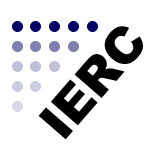
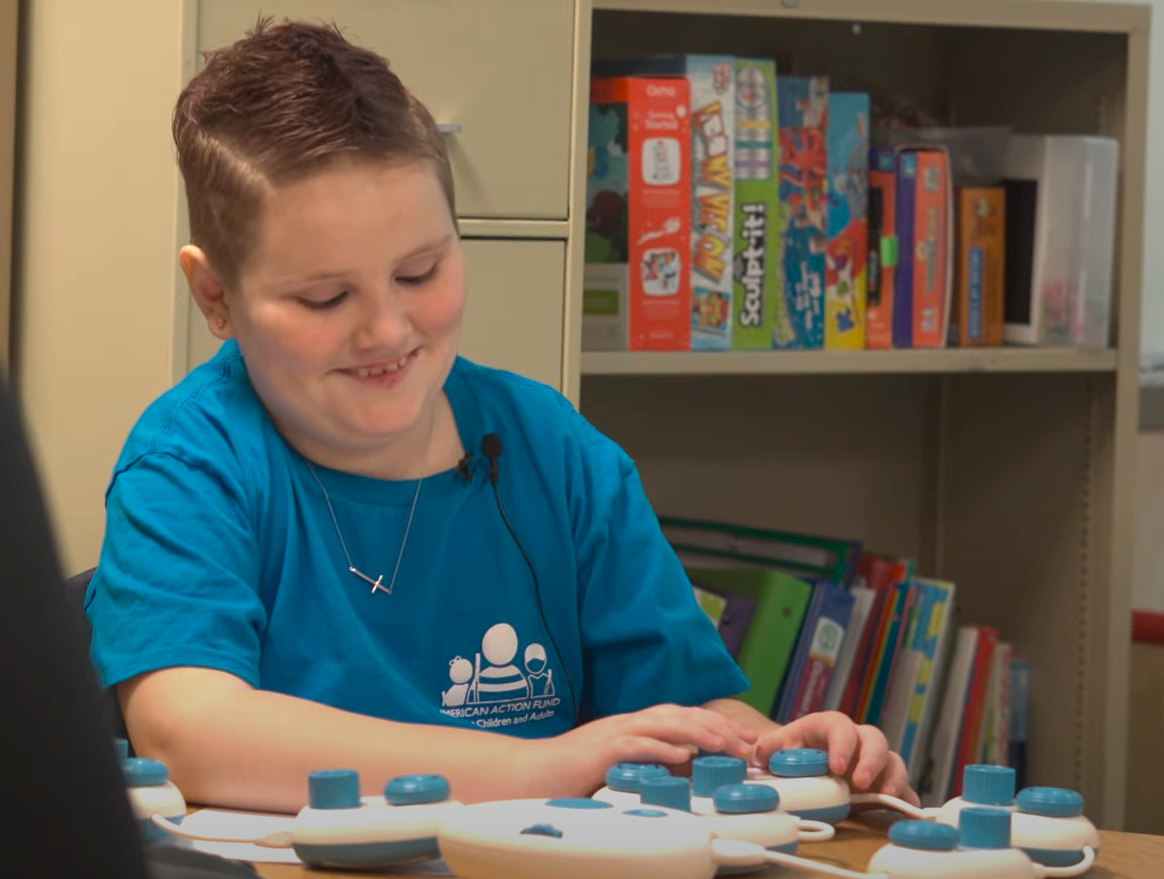
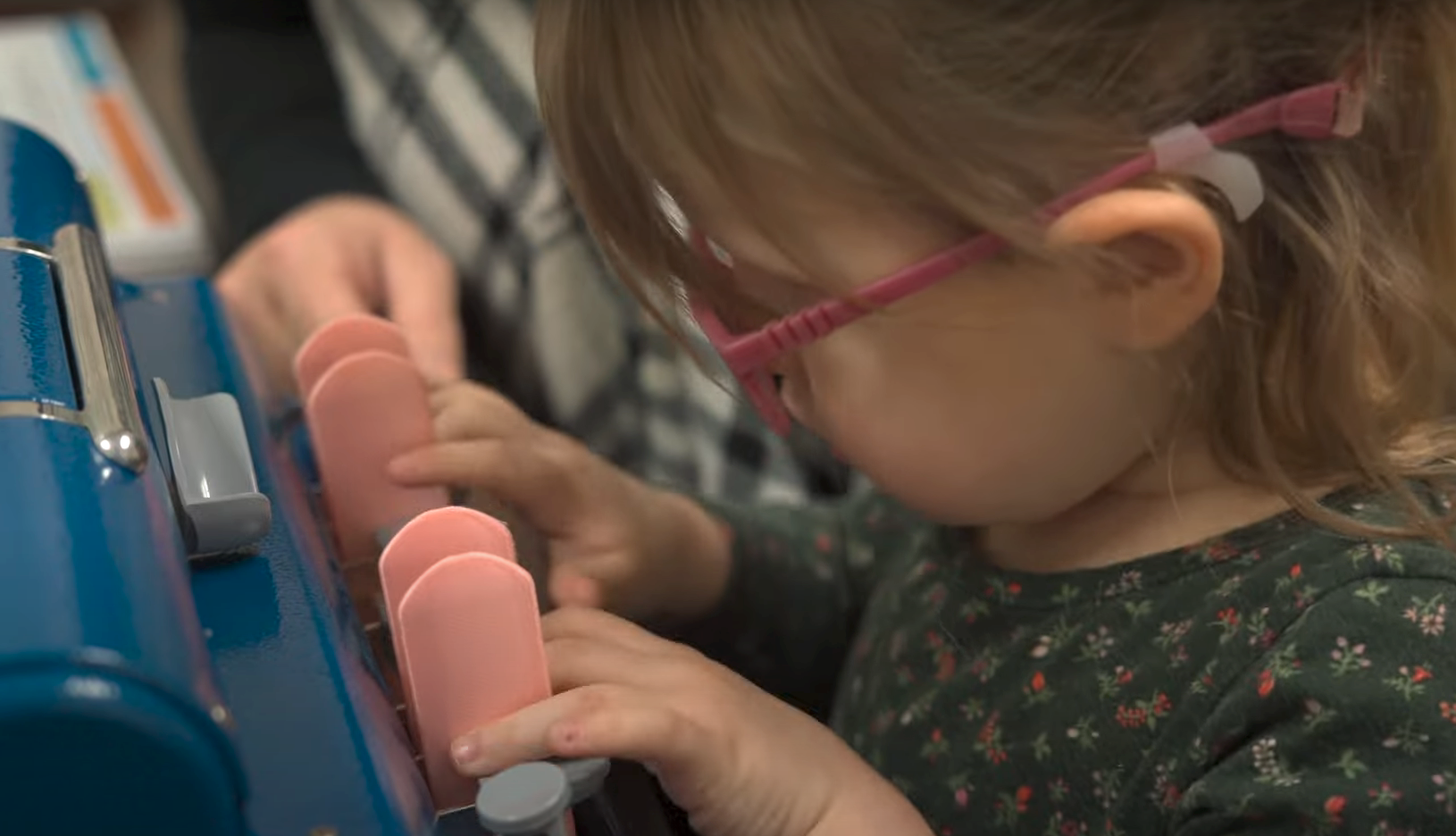
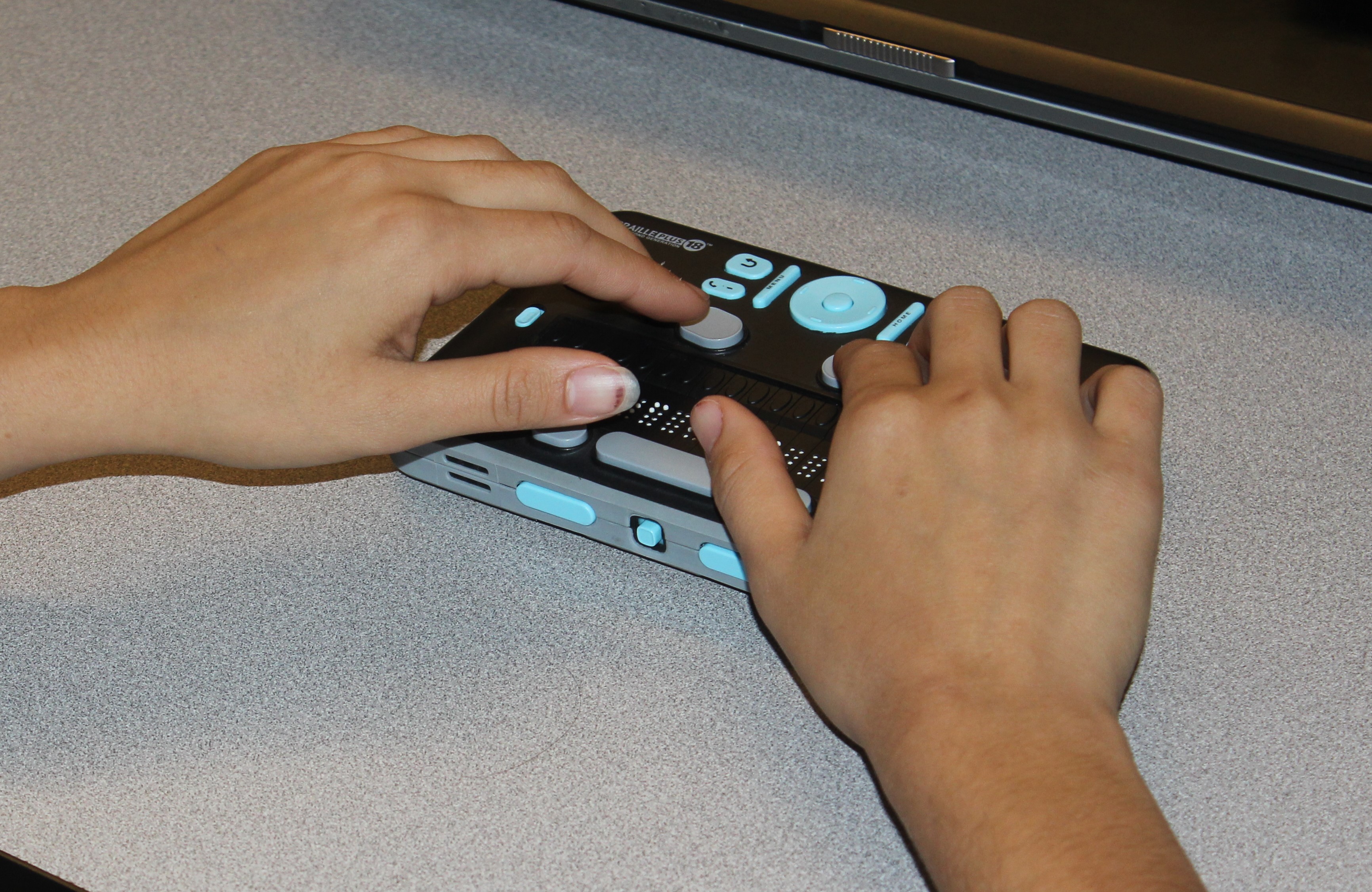




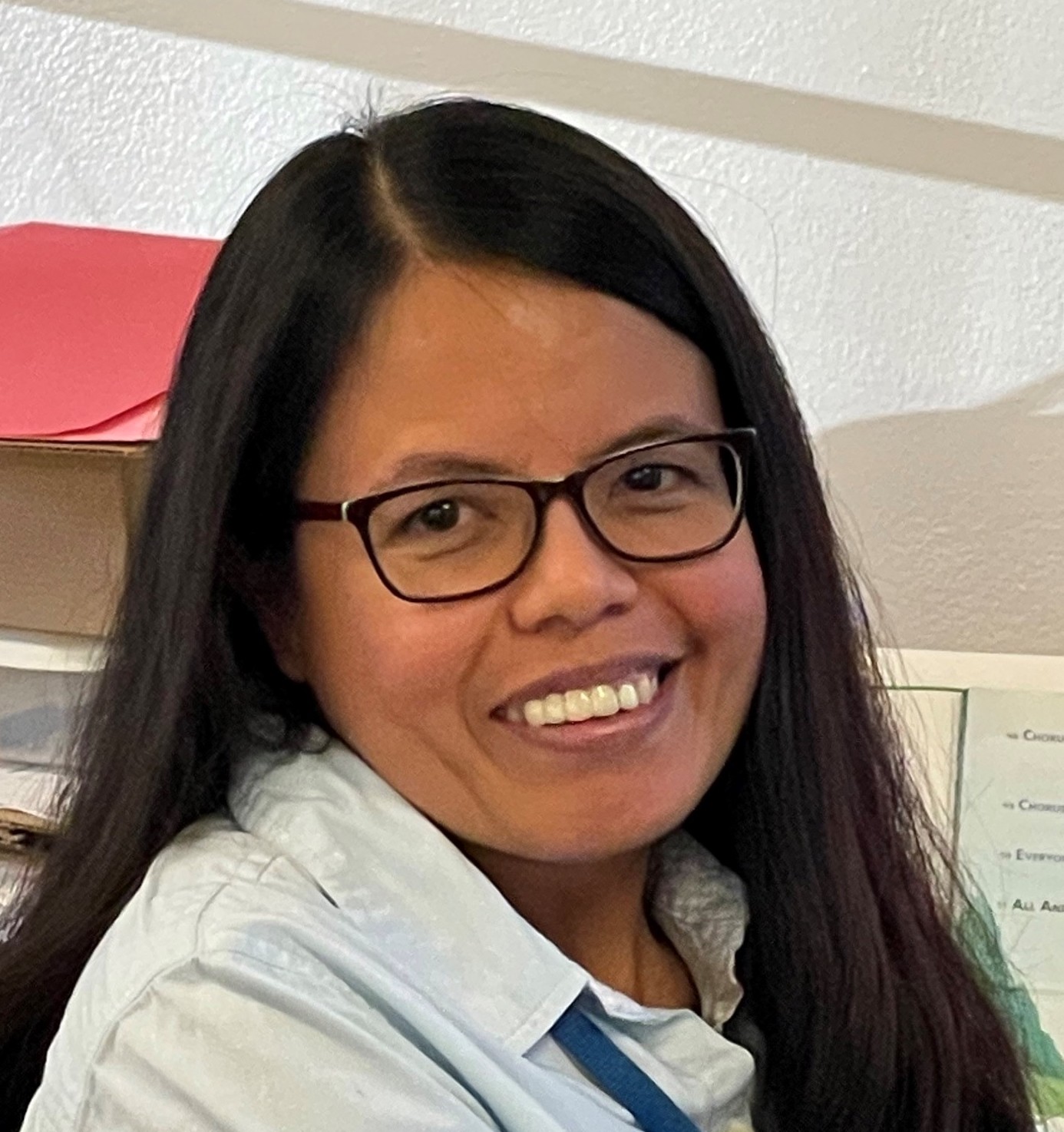

 The
The 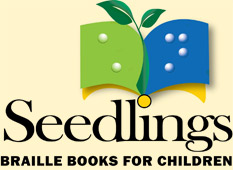 Through the Seedlings Book Angel Program, visually-impaired children can receive two free braille books. Choose from print/braille/picture books, print/braille books, or braille only books.
Through the Seedlings Book Angel Program, visually-impaired children can receive two free braille books. Choose from print/braille/picture books, print/braille books, or braille only books. 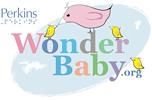 , a project funded by
, a project funded by 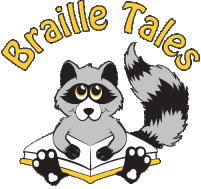
 Hands On! Books for Blind Children is a series of programs for blind children that seek to provide braille books to thousands of blind children and their families throughout every stage of their learning and to provide advocacy and education promoting the benefits of braille. These programs include: Readbooks! Because Braille Matters Family Outreach Program, Bumpy Basics, Children's Braille Book Club, and Lifelong Literacy. Visit the
Hands On! Books for Blind Children is a series of programs for blind children that seek to provide braille books to thousands of blind children and their families throughout every stage of their learning and to provide advocacy and education promoting the benefits of braille. These programs include: Readbooks! Because Braille Matters Family Outreach Program, Bumpy Basics, Children's Braille Book Club, and Lifelong Literacy. Visit the 

